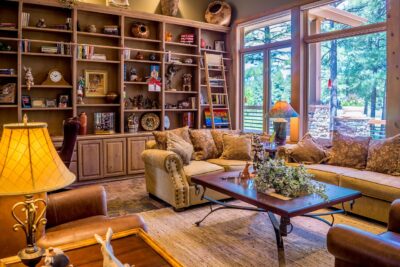
How to Retrofit Old LED Fixtures with Modern Covers
How to Retrofit Old LED Fixtures with Modern Covers By Aman | Updated on April 15th 2025 LED lighting has pretty much taken over the
Home » The Impact of Proper Lighting in Retail Environments
Lighting is a powerful tool in retail environments, shaping not only the physical appearance of a store but also the behavior and perceptions of customers. Proper lighting enhances product visibility, creates a welcoming atmosphere, and drives purchasing decisions. Whether it’s highlighting premium products or setting the overall mood, retail lighting is essential in crafting a compelling shopping experience.
This article explores the profound impact of proper lighting in retail environments and provides actionable insights for optimizing store lighting.

Lighting significantly influences human behavior and emotions. Bright, vibrant lighting energizes shoppers, encouraging them to explore products actively, while softer, warm lighting creates a relaxed environment that encourages customers to linger. Color temperature, brightness, and intensity all play a role in shaping mood and consumer behavior.
Each type of lighting serves a unique purpose, collectively creating an environment that appeals to customers and encourages engagement.
Strategic placement of lighting enhances the customer journey within a store. Well-lit entrances make the space inviting, while targeted accent lighting directs attention to key products. For instance:
Lighting impacts how customers perceive products. Bright lighting can make colors appear more vibrant, enhancing the appeal of items such as clothing or accessories. Subtle adjustments in lighting intensity can also create a premium feel, influencing customers to associate products with higher quality and value.
Well-designed lighting contributes directly to increased sales. Highlighting products effectively encourages impulse purchases, while a comfortable shopping environment ensures customers stay longer and explore more.
Modern lighting solutions, such as LEDs, reduce energy consumption and maintenance costs. Advanced systems with motion sensors and automated dimming further enhance energy efficiency, allowing retailers to save significantly on operational expenses.
Retailers who invest in optimized lighting systems often see a strong return on investment. For example, upgrading to energy-efficient fixtures not only lowers utility bills but also enhances the store’s visual appeal, leading to higher foot traffic and sales.
Different retail environments require unique lighting approaches:
Combining multiple lighting types ensures a balanced and effective setup. Layered lighting, for instance, integrates ambient, task, and accent lighting to create a visually dynamic and functional space.
LEDs have revolutionized retail lighting, offering superior energy efficiency and customizable options. Their long lifespan and reduced heat output make them a preferred choice for modern stores.
Smart lighting technology allows retailers to adjust brightness, color temperature, and even lighting patterns remotely. These systems enhance operational efficiency and enable real-time adjustments to accommodate changing store layouts or promotions.
Emerging trends include personalized lighting experiences, where lighting adapts based on customer preferences, and the integration of IoT devices for enhanced control and analytics.
Sustainability is increasingly important in retail. Energy-efficient lighting solutions, such as LEDs and motion-activated systems, not only reduce environmental impact but also appeal to eco-conscious customers.
Adopting sustainable practices enhances a store’s reputation while driving down operational costs. Retailers can further emphasize their commitment to sustainability by using recyclable or reusable lighting components.
Consulting with lighting professionals ensures a cohesive and effective lighting design. Experts can recommend the best fixtures and configurations to maximize both aesthetic and functional benefits.
Proper lighting in retail environments is not just an operational necessity—it’s a strategic investment that drives sales, enhances customer satisfaction, and strengthens brand identity. From influencing purchasing decisions to reducing operational costs, the benefits of effective retail lighting are undeniable.
Retailers looking to optimize their lighting systems should prefer consulting experts like Fluorolite, whose wide range of replacement light covers and lighting solutions can enhance both functionality and aesthetics. Investing in the right lighting today can transform the retail experience for customers and ensure long-term profitability for businesses.
Retail lighting enhances product visibility, creates an inviting atmosphere, and influences customer behavior, all of which contribute to higher sales.
Energy-efficient lighting reduces utility costs, minimizes maintenance, and supports sustainability goals, all while improving the overall shopping experience.
Luxury stores benefit from accent lighting and layered lighting techniques, which create a sophisticated and exclusive ambiance.
Retailers can explore reliable solutions from providers like Fluorolite, which offers a variety of light covers and lighting products tailored to commercial needs.
Smart lighting systems provide real-time control over lighting settings, improve energy efficiency, and enhance the adaptability of store layouts.

How to Retrofit Old LED Fixtures with Modern Covers By Aman | Updated on April 15th 2025 LED lighting has pretty much taken over the

How to Prevent Yellowing and Cracks in LED Fixture Lenses By Aman | Updated on April 15th 2025 You’ve probably seen it before—those once-clear LED

How to Choose LED Fixture Lenses for Harsh Industrial Environments By Aman | Updated on April 8th 2025 Ever stepped into a factory or a
"We've Got You Covered" and Trace n'Fax are Registered Trademarks of Fluorolite Plastics, LLC. © 2011-2024 All rights reserved Fluorolite Plastics